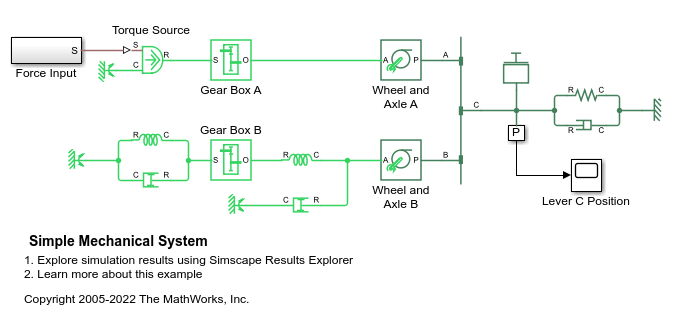Rotational Damper
회전 기계 시스템의 점성 댐퍼
라이브러리:
Simscape /
Foundation Library /
Mechanical /
Rotational Elements
설명
Rotational Damper 블록은 다음 방정식으로 설명되는 이상적인 회전 기계 점성 댐퍼를 나타냅니다.
여기서 각각은 다음과 같습니다.
T는 댐퍼를 통해 전달되는 토크입니다.
D는 점성 마찰로 정의되는 감쇠 계수입니다.
ω는 상대 각속도입니다.
ωR과 ωC는 각각 포트 R과 C의 절대 각속도입니다.
블록에서 양의 방향은 포트 R에서 포트 C로 가는 방향입니다. 즉, 포트 R의 속도가 포트 C의 속도보다 큰 경우, 블록은 R에서 C로 토크를 전달합니다.
변수
시뮬레이션 전에 블록 변수의 우선 순위와 초기 목표값을 설정하려면 블록 대화 상자 또는 속성 인스펙터의 초기 목표값 섹션을 사용합니다. 자세한 내용은 Set Priority and Initial Target for Block Variables 항목을 참조하십시오.
공칭값은 모델에서 변수의 예상 크기를 지정하는 방법을 제공합니다. 공칭값을 기반으로 시스템 스케일링을 사용하면 시뮬레이션 강인성이 향상됩니다. 공칭값은 다른 소스에서 가져올 수 있으며, 그중 하나가 블록 대화 상자 또는 속성 인스펙터의 공칭 값 섹션입니다. 자세한 내용은 Modify Nominal Values for a Block Variable 항목을 참조하십시오.
예제
포트
보존
파라미터
확장 기능
버전 내역
R2007a에 개발됨


